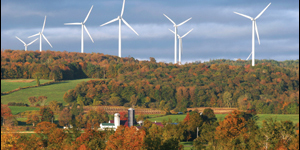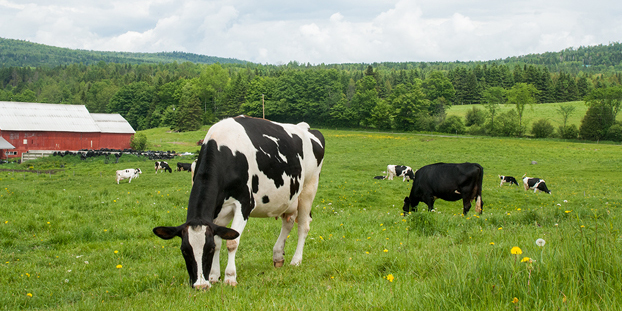
The Northeast Regional Earth System Model
Eco-Innovation
Energy
National and local policies, along with high public and private investment, result in 80% of regional electricity coming from low–carbon renewables by 2050. The regional generation sector is decentralized, with the adoption of micro- and smart-grids. Investment in higher efficiency technology adoption results in reduced electricity demand.
Agriculture
A regional, high-innovation food system is developed in the Northeast. Prime farmland is protected from conversion and policies are implemented to support farmer access to land. Regional farms are ‘closed-loop’ and diverse in size. Agriculture becomes an increased source of higher-wage regional employment. Per-capita demand for food and livestock feed decreases. Agriculture is allowed as a form of open-space conservation.
Land Use
A focus on the development of green communities that incorporate principles of ‘classic new-urbanism’ with a view of ‘ecosystems as infrastructure’. New urban communities are designed with greenway networks. Support for open space conservation and investment in new green infrastructure and mass transit.
Water
Increased regulations and incentives to support both point and non-point source pollutant abatement. Increased state revolving funds and application/implementation of the Clean Water Act with updated criteria. Reduced per-capita water withdrawals through more efficient technology use. Nutrient and water volume trading.

Image: Maple Ridge Wind Farm

Image: Stonyfield Farms cows

Image: Atlanta Beltline

Image: Aquaponics

